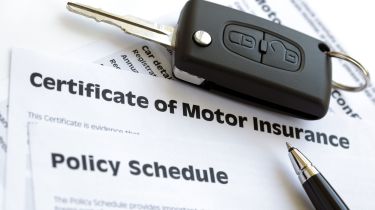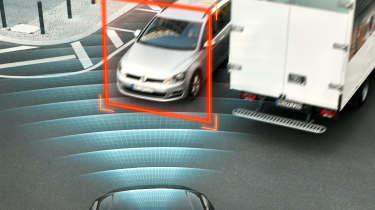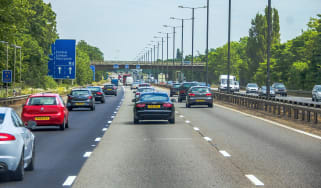What are Vehicle Risk Ratings? UK's new car insurance groups explained
Car insurance groups are out and Vehicle Risk Ratings are in – but what’s the difference and what does it mean for drivers?

Car insurance in the UK is currently undergoing a significant change with the introduction of the new Vehicle Risk Rating (VRR) system. Designed to replace the long-standing car insurance group system, Vehicle Risk Ratings have been introduced to provide insurers with a more detailed level of risk assessment, while giving drivers a clearer picture of the strengths and weaknesses of different cars.
The new insurance model assesses a variety of factors, from performance to repairability and safety. Individual scores are awarded for five categories that are then used to determine an insurance policy. Thatcham Research, the automotive risk organisation overseeing the introduction of the new Vehicle Risk Rating, believed that a new system was needed to account for rapidly evolving automotive technology, such as new advanced safety systems, EV powertrains and over-the-air (OTA) software updates.
As the new system is rolled out, it’ll be important to understand how your car insurance could be affected and which cars will cost the least and most to insure – read on to find out.
What are Vehicle Risk Ratings and how do they work?
Before we dive into the new system, let’s quickly cover how the outgoing car insurance group system works. Since 2006, cars have been categorised into groups from one to 50, with insurance group one cars being the most affordable to insure. A car’s insurance group is decided by Thatcham Research and based on lots of data, including cost, performance, safety tech and how expensive it is to repair. Up until recently, this data combined with insurers' historic knowledge of different car types was sufficient to determine a customer’s premium.
According to Thatcham Research CEO Jonathan Hewett, “this is no longer viable in today’s fast-paced environment where it’s important to understand the influence of rapidly developing ADAS [advanced driver-assistance systems] on accident frequency and severity, the impact of new security technology in staying ahead of the criminal gangs and the challenges electrification and new vehicle structures present to sustainable repair.”

The new Vehicle Risk Rating system aims to solve this issue by providing a more ‘granular’ level of risk assessment, taking into account rapidly evolving automotive technologies. The system is broken down into five categories:
- Performance – this considers factors such as acceleration, top speed, drivetrains, powertrains and list price.
- Damageability – how the materials and design of a car affects the severity and cost of repairs.
- Repairability – a new area of assessment that looks at how easily a car can be repaired, considering a “transparent and accessible repair strategy”.
- Safety – this assesses any passive and active safety systems, as well as other factors like kerb weight.
- Security – the use of both physical and digital systems designed to prevent theft.
For each category, a vehicle is awarded a Vehicle Risk Rating from one to 100, with a low score representing a low risk. For example, a car with the latest active safety system is likely to receive a low score in the Safety category, indicating a low risk for insurers. Conversely, a supercar will be scored highly in the performance category, as it presents a high risk to insurers in this area. Insurers will be able to use these five individual scores to tailor an appropriate insurance premium for each new car, taking into account a wider range of factors than the old system.
Under the old system, a new car’s insurance group was fixed once it went on sale. The new Vehicle Risk Rating system adopts a dynamic approach, meaning that scores can change based on new software updates, changes to repair strategies and theft data for each car.
Thatcham Research hopes that the new system will allow both customers and manufacturers to compare the strengths and weaknesses of different models, helping customers make more informed purchasing decisions and encouraging manufacturers to “prioritise insurability in their design and development of new technologies”.
When is the new Vehicle Risk Rating system being introduced?
The new Vehicle Risk Rating system was launched in September 2024, applying to all new cars sold in the UK from August 1st 2024. However, a transition period of at least 18 months is currently in place to allow insurers and other stakeholders to adapt to the new system.
Insurers will use both the old insurance group system as well as a Vehicle Risk Rating to determine insurance costs until the transition period ends. After this point, all new cars will be insured in accordance with their five Vehicle Risk Rating scores.
There are no plans to backdate the system and apply a Vehicle Risk Rating to older cars – all cars sold before August 1st 2024 will continue to be categorised under the old insurance group system.
Will my insurance premium increase?
It’s impossible to say at this stage whether insurance premiums will increase or decrease, as the system is still in the transition period and insurance premiums vary from model to model. That said, there’s still a chance that some models currently in high insurance groups could receive a low VRR score and vice-versa as the new system takes more data into account.
When the new system is fully implemented, the five individual VRR scores will allow car buyers to find out why one particular model is more expensive to insure than another – something that the current insurance group system doesn’t provide. However, Thatcham Research has made it clear that buyers should not directly compare old insurance group numbers with the new VRR score when shopping for a new car as they are two different systems.
Read more about the best cheap cars to insure in the UK…
Recommended

Classic car tax exemption: which historic vehicles qualify?
Most Popular
Tips & advice

Car dashboard warning lights: what does each symbol mean?

Electric car charging stations: public networks, charger types, apps and maps








